All-new Q8 Surprises as More-compact Audi SUV
Filed under: Weekly test drives, Autos
By John Gilbert
Last week, I wrote about the fun and education offered by the Midwest Auto Media Association’s annual rite of spring — the MAMA Spring Rally — where about a hundred new vehicles are brought to Elkhart Lake, Wis., by manufacturers to be driven by 80-100 auto journalists, who learn how they handle along with experiencing the sheer joy of driving on the best road-racing course in the country.
But getting there was half the fun. My older son, Jack, who assists me with testing and photos, drove up from the Twin Cities so we could leave from Duluth, early on Tuesday, May 21st, for the six-plus-hour drive, zig-zagging diagonally from Duluth, Mn., and down through Wisconsin to Elkhart Lake, in the southeast region just north of Milwaukee.
We drove down there and back in an Audi Q8, which is Audi’s latest and perhaps best SUV. In Audi’s lexicon, cars are designated by “A” as in A3, A4, A5, A6, A7 and A8, and the SUVs by “Q” with the smallest the Q3, then the Q5 midsize and the Q7 as the largest. I am a big fan of vehicles that are as small as they can be while still being big enough, so I assumed the A8 would probably be the biggest, and I would have to subvert my personal feelings into the scope of someone with a need for a huge SUV.
To my pleasant surprise, the Q8 is not only less than huge, it is lower and shorter than the Q7. It shares the design cues, although its familiar grille has been altered to contain much wider gaps in its cross-hatch design. So large, in fact, that I suggested it could let in a lot of air, but might also let in insects as large as sparrows, which could clutter up your radiator.
Next from Audi is the e-tron, a pure-electric SUV with quattro all-wheel-drive and all, and we await a chance to test its driving range. It looks sleek and compact, with the same style grille as the Q8, which for now, is plenty high-tech. It comes in hybrid fashion, which Motor Trend claimed is the only available engine, but our test vehicle came with an alternative — the high-tech turbocharged 3.0-liter V6, which delivers 354 horsepower and 369 foot-pounds of torque in other Audi utility vehicles. It runs through an 8-speed Tiptronic automatic.
I was surprised that the Q8 was not included in the Rally, where we also vote on the Family Car of the Year, and now, with prices rising, a Luxury Family Car of the Year. The MAMA board decrees that only cars made available to be driven at the spring and fall rallies can be considered, whatever the reason for Audi’s exclusion, it’s unfortunate, because the Q8 would have been a definite favorite. Selfishly, though, it didn’t matter, because I got to experience it in real-world conditions and it came through regally.
Listed at a $67,400, which is moderate for a luxury-level SUV, the test Q8 totaled $79,340 once you added on option packages such as Premium Plus, Driver Assistance, the Year One, and Towing. That meant the jump up to 22-inch alloy wheels, plus virtually every driver-assist gadget you’ve ever heard of, to alert drivers to obstacles moving or stationary, ahead, behind or on either side. It will stop short of an obstruction or slow-moving vehicle, and its superb handling from adaptive suspension dampers makes it handle with great, sporty stability.
The test Q8, in its optional Daytona Gray Pearl Effect paint, justifies its luxury price with interior features you appreciate as soon as you see them, such as fine-grain ash inlays on the dashboard, tastefully blended in with aluminum and leather to engulf you in plush comfort, but always with solid support.
It also has Audi’s newest navigation system, and we found it to be both good news and bad news. On the way down it was fantastic, taking us on all sorts of back roads, but always excellent highways. As a Minnesotan, I have to wonder why every Wisconsin road we drove on was smooth and maintained, compared to the pothole-dotted endurance tests of Minnesota highways.
The simplest way from Duluth to Elkhart Lake might be to go straight south on Hwy. 53, then take Interstate 94 east until finding a likely connecting road, or to cut straight east on state roads running above 94. But the quickest way is also the most enjoyable and most fun driving, and it was exactly the way the Audi nav lady directed us. We made it from Duluth into the north end of Elkhart Lake, all 350 miles on one tankful of premium gas, getting about 24 miles per gallon, off an EPA maximum estimate of 22.
It was less perfect two days later on our return trip Thursday afternoon. I anticipated it might vary its guidance because I was going to drop off Jack at his residence just north of St. Paul, but I still wanted to drive on most of the same roads we had come down on. To assure the nav lady wasn’t tempted to guide us quite a distance southwesterly to connect to I-94, we drove off in a northerly direction for 30 miles and then put in our navigation desires.
We made a stop of two, and when we got into our trip, we drove for a solid half-hour before I realized we were being directed by gentle voice commands almost straight south. We wasted an hour getting turned around and trying to figure out how to get back on our preferred route, and about every mile or so the nav lady demanded we make a u-turn and head south. Of course, for safety reasons, even the passenger cannot reset the nav while the car is moving, which it reminded us about whenever we tried to cancel out of it. After four or five stops and resets, we ignored the nav lady and drove northward, until we finally coaxed the system to concede and reconfigure the directions.
Pondering the fun of driving Lexus sports cars, BMWs like the new 3-Series, Mercedes products, hot Mustangs and Shelby GTs, and everything else from Miatas to Hyundai Veloster N, and Challenger Hellcats, the enjoyment was plentiful. But it won’t be diminished with more electrification. I have reached the point of experience where I want to learn about the many high-tech drivability features as to simply go fast.
Off the actual race track, we had off-road and the timed autocross sessions, where more than a dozen vehicles could be hurled around one lap of the tight little paved go-kart track inside the big circuit. We lined up like grade-school kids fighting for position at an ice cream parlor, and when you got up to be first in line, you could defer if you were waiting for a certain car. I did that a couple times, because I wanted to experience everything, including the handling of the comparatively large Maserati Lamonte Trofeo SUV with its surprisingly solid suspension and Ferrari-built powertrain.
I finally got to all of the autocross cars except an elusive dark red BMW M2 coupe that seemed to always be on the course, driven by somebody else. I did get to drive the just-introduced Veloster N, a Mazda3 hatchback, a Miata, a Nissan 370Z, the GTI, GLI, BMW Z4, Durango SRT, Gladiator, Blazer, and about 50 others either on the big track, the surrounding roadways and the autocross, where times were electronically registered and prizes awarded for the quickest laps.
While a few of us wanted to try everything, some picked out what they thought would be the quickest car and drove it repeatedly. The guy who won actually placed first, second and third — and it turned out, all in that same M2. Everyone thought that was a novelty; I thought he missed a lot of other neat cars. And no wonder I couldn’t get even one lap in the M2!
The auto industry is hurtling into the future, and I couldn’t help but wonder how the Rally will be when it becomes mostly populated with electric cars. Assuredly, we will all be driving electrified vehicles before another decade passes. Maybe it will be pure electric, or maybe some form of plug-in hybrid, or straight hybrid, but the free efficiency of electric power that can be self-generated by an engine and offers lightning-quick performance is advancing rapidly.
Last week I named the Acura NSX as the unequivocal best I had ever experienced on the track. That low-slung sports car has three electric motors that work seamlessly with a specially-built 3.5-liter V6, located transversely behind the two seats and ahead of the rear axle, which makes it “mid-engine.” That pays off with handling balance unattainable with front, rear, or all-wheel drive.
The NSX V6 powers the rear wheels, which supply the main thrust in forward acceleration, because of the natural shift of a car’s center of gravity from front to rear during hard acceleration. But while one of the electric motors coordinates everything, the other two each operate one front wheel. You would never know it, because operation is so smooth, but the combined horsepower to all four wheels is 573 from the gas-electric combination.
The advancement of cars has been matched by advances in connectivity, and navigation systems, which are pretty fool-proof these days. The nav on my
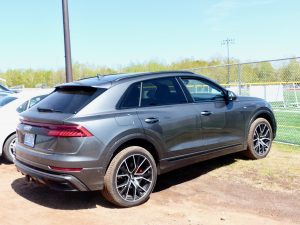
What is as graceful as the styling harmony of the Audi Q8’s rear corner, at a high school baseball tournament game?
iPhone works better than most car systems. But looking back at the almost humorous stubbornness of the Audi Q8’s navigation, it was good to find something to complain about, because otherwise the Q8 was close to perfect.
Lots of power, good fuel economy, comfortable ride, luxurious interior, all housed within an agile, low-slung and attractive SUV that belies its high numerical designation and, hopefully, will be Audi’s guide to a sporty crossover future. If the nav lady fouls up your directions and your trip takes longer, well, that’s just a little more time to enjoy the driving.
NSX, Special Tribute Highlight MAMA Rally
Filed under: Weekly test drives, Autos
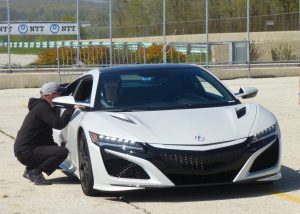
Acura’s second version of the NSX combines mid-engine V6 with three electric motors for the ultimate hybrid. (Photos — Jack Gilbert.)
By John Gilbert
Elkhart Lake, Wis.
Driving the newest cars around Road America’s road-racing course at Elkhart Lake, Wis., is one of the highlights every year in the auto writing business. It’s called the MAMA Spring Rally, and it lures nearly all manufacturers to bring their newest offerings and allow nearly 100 Midwest Auto Media Association journalists to drive them one lap around the classic 4-mile layout.
The event lived up to all expectations on a couple days in mid-May, including two nights at the Osthoff Resort in Elkhart Lake and some fantastic meals in addition to the cars. This year included a couple of special highlights for me, on a course where I once took a race driving school and competed in a Showroom Stock race nearly 50 years ago. I’ll explain my highlights in reverse order. First, the finish.
Two cars I had hoped to get into provided my last two thrills. I had been told that there were 37 drivers on a waiting list for the Acura NSX, the amazingly low-slung, mid-engine two-seater sitting there in gleaming Casino White Pearl. If I could come back just before the end of the final track session at 4 p.m., they would get me into it for my lap.
At about 3:45, the Mercedes C63 S AMG became available. You get one lap, out of the pits on signal, and all the way aroul14 turns and up and down hils before coming back into the pits. No passing. With this car, a co-driver sat in the passenger seat, filling me in on the complexities, and making sure I didn’t sail off into the next dimension.
This car, tuned and prepared by the crack AMG performance arm of Mercedes, is beyond just a slick-handling powerhouse. It has a 4.0-liter V8 and is called “Bi-Turbo” because it has twin turbochargers. These are not what you’d call mass-produced. The engine is build by hand, by one engineer, whose signature adorns the engine. This one had 503 horsepower and 516 foot-pounds of torque, which is more than enough. I would say I drove at about 40 percent of the car’s capacity, and it was awesome. Of course, it should be, for $97,830.
Amazingly, you could get a version up to 630 horsepower and 554 foot-pounds of torque for another $60,000 or so. But with front engine and all-wheel drive, 503 seemed enough.
Finally, just a couple of minutes before 4, they called me back into my helmet for the NSX. Same deal, with a passenger as my guide. Without hesitation, I will say that in all the years I’ve done these test runs around Road America, the new NSX was the best car I’ve experienced on that track. It is a jewel, a very tight two-seat coupe, with the super-tuned 3.5-liter V6 in a mid-engine layout, and it’s augmented by three electric motors to total 573 horsepower and 476 foot-pounds of torque. How’a that for a hybrid?
It also has a 9-speed, dual clutch transmission, and because so much of the cart is carbon fiber — like the roof, deckled, spoiler — it is extremely light even though it feels completely planted because of the mid-engine balance and all-wheel drive. It’s remarkable that the engineers can coordinate the gas engine powering one axle’s wheels and the hybrid motors matching with the others. It was a genuine thrill to drive that car.
I thanked the guys with both the Mercedes and Acuras and said it worked out great to leave those two until last, because they were the two best, and driving them earlier in the day might have reduced sone excellent other cars to anticlimactic.
There were dozens of new vehicles, and many were limited to driving on the roads surrounding the track without being allowed on the track. The next day we drove an assortment of trucks off-road, and had the chance to try numerous cars on a short speed test around a short course laid out for go-karts.
Among the highlights: The just-introduced Jeep Gladiator, Jeep’s long-awaited pickup, is like a combined Wrangler and pickup with a 3.6-liter V6. The Ram 2500 Power Wagon, and the Durango SRT 392 with a 6.4-liter Hemi were other highlights, along with an overwhelming Challenger SRT Hellcat Redeye.
The Lincoln Nautilus is a new SUV, very slick. The Kia Telluride is also a large SUV, sll new and filled with class. A pleasant surprise is the new Chevy Blazer, an old name restored on a compact crossover that should be a huge success, with a 3.6 liter V6.
Honda had a couple of its new Passports, another old name recirculated on an impressive new crossover that falls between the Pilot and CR-V and is aimed at more rugged duty than either of those siblings. Cadillac had a new XT4 available to drive. The Kia Soul is redone, with a 1.6-liter turbo that gives it more kick for under $30,000.
Another very impressive drive were a stunning pair of dark red sedans. First was the new and revised Mazda3 compact, this one with its Skyactiv-G 2.0-liter engine with an amazing amount of horsepower, enough to power all four wheels. It comes as a hatchback, which I prefer, or a sedan that looks like a downsized Mazda6.
The other among many red-is-the-magic-color cars was the Acura TLX, which is a specialty version of the sedan Acura made by combining the TSX and the TL, but this one is so special it doesn’t have a price yet assigned. It will be lots. The car is shipped from Honda’s Marysville, Ohio, plant to the PMC — Performance Manufacturing Center — plant, where the NSX is so meticulously built. One of the colors you can order on the NSX is a fantastic red that is so special it is a $6,000 option, and takes a five-day process to complete. Meanwhile, there are only going to be 360 hand-built TLX PMC sedans, and the decision was made to limit it to one color — that same special red. So at least there’s no option fee for it.
The first day started, in a misty fog and chilly 40-something gloom, so we gave the track some time to dry out. When it was ready, my son, and assistant, Jack Gilbert, and I hopped into a light and bright blue Hyundai Veloster N, a letter designation which sets apart specialty high-performing Hyundai models from now on, to carry out a special task.
In my early days at Elkhart Lake, a great friend from college days, Tony Swan, also reported on races and later raced on that track as a writer at Car & Driver. As I wrote about late last year, Tony finally gave out after a nasty battle with cancer, but he drove and reported until the end. I wished I could have attended services near his home near Ann Arbor, Mich., but his wife, Mary, drove Tony’s GTI to Mound, Minnesota, where Tony grew up on Lake Minnetonka, and set up a small ceremony there for Tony for friends and relatives.
That one included a couple of guys who attended the University of Minnesota with Tony and me. Mary also brought a few envelopes with some of Tony’s ashes enclosed, because he had some selected places he hoped to have them scattered, including Lake Minnetonka, and at a race track or two.
I knew Tony loved Road America, so I requested one of the envelopes, which I carried down in my jacket pocket. I asked Jack to drive while I sat in the passenger seat, and we picked the Veloster N as being appropriately spory. We went around the track semi-fast, and nearing the end we went through a low
part called Thunder Valley, then made a hard right turn through Canada Corner. I had told Jack my plan, and I readied the envelope. As he started up the hill, into a fierce wind, I opened the window, and let Tony fly.
It was, indeed, Tony’s final ride. Afterward, I notified the MAMA board of what I had done. They all knew Tony, and one of them said how appropriate it was and that forevermore, driving around that corner and starting up that hill will rekindle Tony’s memory.
He’d have loved the high-potency Veloster N, too.
Unbroken 4Runner Keeps On Keepin’ On
Filed under: Weekly test drives, Autos
By John Gilbert
Generally when you review a new vehicle you can hardly contain yourself from gushing about all the fantastic new high-tech features and gadgets contained in it. And then there’s the 2019 Toyota 4Runner.
The 4Runner is solid, steady, consistent, free of surprises, and…completely familiar. Even if it looks a little bit different from the one we’ve known for a decade.
Toyota is an amazing company, and nobody can quarrel with its overwhelming sales success, which has been largely achieved by ignoring the styling trends and gimmicks in an automotive world that is seemingly passing it by. By ignoring the guidelines it helped create, Toyota has continued to build the same-old same old of some of its most popular vehicles, such as the Corolla, Camry, Tacoma, Tundra — and the 4Runner.
The RAV4 is different, having been restyled a few times to stay at the top of its popularity game, as Toyota’s top-selling vehicle as a compact SUV.
But go up one step to the 4Runner, the midsize stalwart of the line, and go back to when the fifth generation was brought out, almost a decade ago, Toyota’s reputation for durability and consistency won out over the trends toward latest-tech and gimmickry. Basically, if you are familiar with the 2010 4Runner, you are pretty much familiar with the new 4Runner. The company did make some styling changes for 2018, but the ongoing refinement is primarily under the skin, and is what makes the 4Runner keep 4Running.
Cynics have been accusing Toyota for years about building boring cars, because the emphasis on running forever through a trouble-free existence can cause observers to equate that to boring, compared to so many competitive cars. But overlooked amid the criticism is that people seem to find it comfortable to walk into showrooms and find something so familiar, and they seem to feel comfortable getting the newest version of something they trust.
The trucks and SUVs are the best examples of standing out primarily because they are unchanged. The best comparison might be made to link the Tacoma mid-size pickup and the 4Runner midsize SUV. There is some merit there, because basically, the tried and true Tacoma pickup underpins the 4Runner. You could say the 4Runner is a Tacoma with a body, or that a Tacoma is a 4Runner with a bed carved out of the rear.
A reliable source I know well in the business says it best: “With Toyota, the cars aren’t cool, but the trucks are.”
I’ve always thought it was interesting that the huge rivalry between Japanese giants Toyota and Nissan was best described by the battle between the 4Runner from Toyota and the Pathfinder from Nissan. Both came out about the same size, both about the same shape, both had strong engines and both were the springboards to vastly expanding SUV arsenals.
I personally preferred the Pathfinder, for a couple of peculiar reasons. When I would test a 4Runner, I liked everything about it, but it seemed I would bump my head on the roof as I entered, and again as I exited, and it also seemed that a lot of the switchgear location always required a few days for me to learn. The Pathfinder, on the other hand, felt custom made for me — good clearance for my head in and out, comfortable driving position. with everything right where my instincts and fingertips figured it should be.
That was a long time ago, but it continued to be a factor in my analyses year after year, even though I always accepted and acknowledged that it was me that was peculiar and not the vehicle.
Now that the 4Runner has been redone a bit for 2018, the new 2019 version is designed and arranged in a way that seems pretty near perfect. That means, it’s pretty close to the same as ever.
The test 4Runner I had for a week on the North Shore of Lake Superior came loaded with all the right stuff. It was the TRD (for Toyota Racing Division) Off-Road Premium model. It starts out with the stiffest platform Toyota engineers can build — as if the company has an unspoken intention to prove it can “out-Jeep” Jeep. Dedicated off-roaders are certain that only Jeeps can take on the most rugged off-road challenges, but those loyalists might be surprised to learn that the 4Runner can be ordered for comfort or in a form that can go anywhere off-road but with a bit more comfort. Read more
A7 Upgrades for 2019 Both Subtle, Substantial
Filed under: Weekly test drives, Autos
By John Gilbert
There I sat, in my own driveway, checking and cross-checking (well, it was still hockey season!) all the features in the 2019 Audi A7 quattro. My obsession was one thing in particular: the very neat little sunscreen that fits up in front of the long, sloping hatchback rear window.
It worked great for filtering out a lot of the sun and heat, but it was getting on toward evening now, and I wanted to locate the power switch that would drop the screen down flush to improve nighttime visibility out the rear.
There are so many switches and gadgets on the A7, as on most high-end cars these days, that it isn’t always easy to figure out what the heck the little icon is for on the various switches. And sometimes you have to get on the expansive information screen, which is a lot like a computer or iPad, and you find an indication that you can tap an electronic switch and get whatever job you want done.
I knew I would find it, but right then I was a half-hour into perusing all the switchwork and gadgetry in what was becoming a more and more futile exercise.
When an automaker is near perfection, sometimes its evolutionary changes feel a lot like no change at all. That’s a good thing, if the car they’re changing is already at the top of the scale. Audi is that way. The German company builds a full slate of cars nowadays, from compact to sporty to luxury, with a fleet of highly regarded SUVs of all sizes alongside.
But Audi is at its best when it comes to making luxury freeway cruisers, which handle and feel more like sporty sedans but are safe, beautiful and highly efficient. At the top is the A8, and the midsize is the A6, but now they have wedged a sporty, fastback version of the A6 in between and called it the A7.
When you line up all three, it’s very difficult to pick a favorite. The A6 and A8 look different because the A8 is longer, particularly the one that comes to the U.S., which is the A8-L — the elongated version only. Of course, the A7 looks markedly different than both of the others, because of the sleeker, fastback roofline and hatch under it. Personally, I think the A7 is the best looking of the batch, and I did review it as a 2018.
But it has undergone significant changes for 2019, so when a 2019 Audi A7 arrived for me to test drive and evaluate for a week, I studied it carefully to denote all the changes. Different platform underneath it, and a change in 3.0-liter V6 engines, from the supercharged hot one to a turbocharged hot one, still 2.0, and from impressive to…impressive. The interesting thing is that all three cars at the top of Audi’s luxury chain — the A6, A7 and A8-L — all use the same engine with the same power.
And it is so good, smooth and powerful, that nobody is going to complain, especially when you can get right about at 30 miles per gallon on a freeway trip. Of course, the A7 has quattro, Audi’s brilliant all-wheel-drive system, although it is changed considerably from the quattro of years past, which had itself been altered and revised repeatedly. Interesting, quattro put Audi ahead of Mercedes and BMW for those of us who drive in snow part of the year, but now that Mercedes and BMW have realized the inherent advantages of AWD and installed it or made it available on many models, Audi keeps refining its quattro to come at compromise from the opposite direction. Read more
Santa Fe is Hyundai’s Latest Leap Into Future
Filed under: Weekly test drives, Autos
By John Gilbert
Just when you think you have Hyundai all figured out, the South Korean car-maker-in-a-hurry turns your perceptions upside down. Again.
Hyundai made a corporate decision that after pretty well mastering the art of delivering small and medium cars that performed at about a class above while priced at about a class below expectations and market levels, the worldwide trend toward SUVs demanded attention. It was a logical progression for Hyundai, whose sales had jumped to 46 percent small SUVs.
To expand its fleet, about a year ago, Hyundai brought out the compact Kona, an amazing vehicle that won our award for New Car Pick of the Year for 2019. We are continuing an extended test of a Kona Ultimate, and we continue to be thoroughly impressed. Kona also won the International Utility of the Year at the Detroit Auto Show and has captured virtually every award within its grasp.
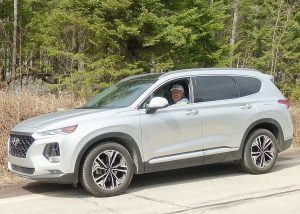
Author won’t give up the wheel, so No. 1 aide Jack Gilbert manned the camera. (Photo: Jack Gilbert.)
In its haste to fill every niche, Hyundai also completely redid its Santa Fe midsize SUV. The new Santa Fe is a totally different vehicle for 2019, made more compact than the outgoing Santa Fe but still leaving a nice space above the Tucson, which remains above the Kona. Nice, three-step size range, from Kona to Tucson to Santa Fe, each with its own personality and all three benefitting from Hyundai’s technology, safety and features, yet still aimed at economy and durability.
When they thought nobody was looking, Hyundai snuck out more new SUVs, a smaller one than the Kona, another mid-sizer, and a larger SUV bigger than the Santa Fe X. But wait! We can’t keep up. And even Hyundai doesn’t seem able to keep up with its own design and marketing traffic jam, so to speak.
While the Kona was winning all those SUV-of-the-year awards, the Santa Fe was virtually ignored, even from the time of its own introduction. The Santa Fe I wrote about at its introduction in the Utah mountains near Park City was nearly perfect from the standpoint of power, efficiency and technology. If you thought the old Santa Fe or Santa Fe XL were too big, and that the Kona was a little bit tight, the new Santa Fe plugged in perfectly. And it is good enough that it deserved some consideration itself for SUV of the year.
Several months have passed, and now the Santa Fe has gotten beyond its introduction and can be found in showrooms nationwide. But up here in Northern Minnesota, late winter has been perfect timing. This has been the winter that never ended, with a new snowstorm threatening to show up on the first weekend in May. Kentucky Derby in Louisville, shoveling anew in Duluth. Why wouldn’t you want an SUV with all-wheel drive?
So before we expand our consciousness to incorporate the reality that Hyundai now has seven — count ’em, 7 — SUVs under its name, let’s give the Santa Fe its due. Read more


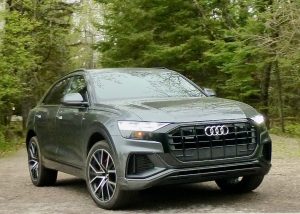
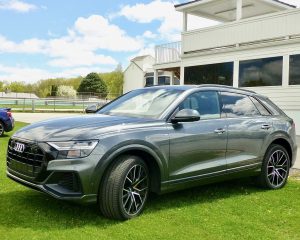

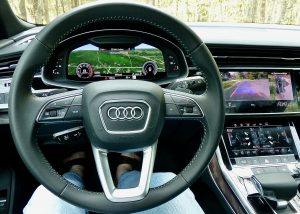
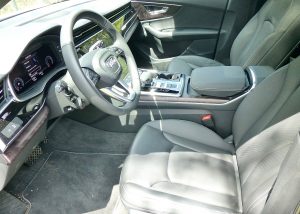
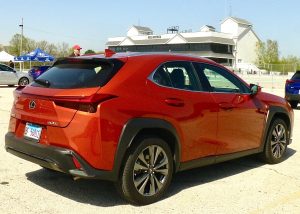
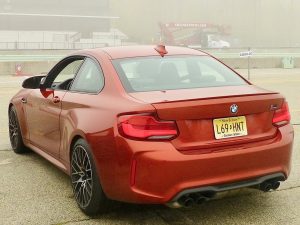
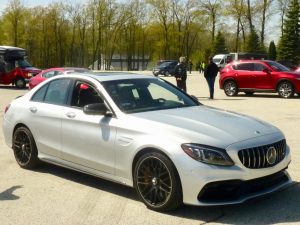

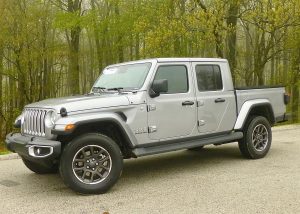
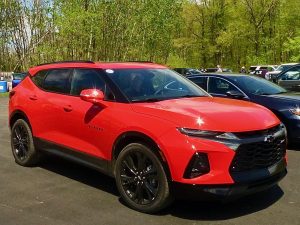
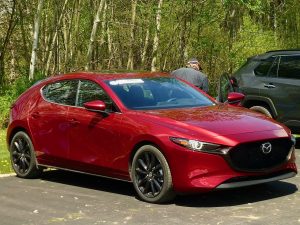
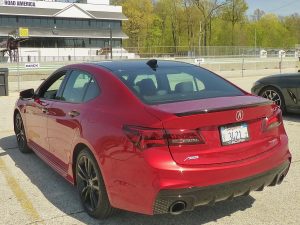
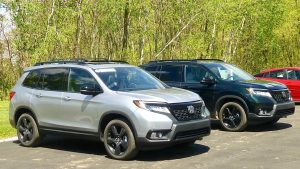
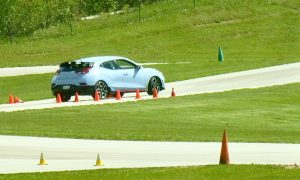
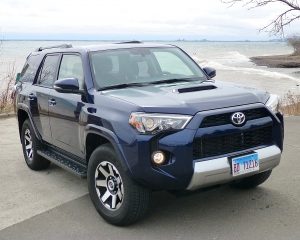
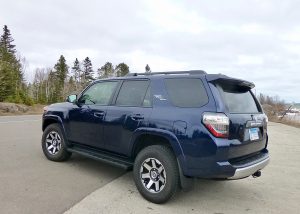
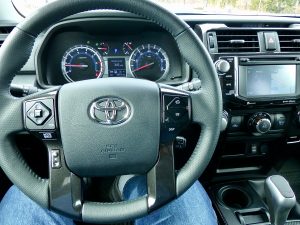
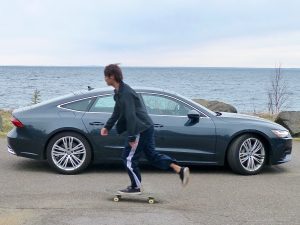

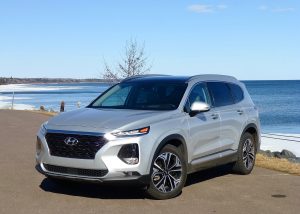
 John Gilbert is a lifetime Minnesotan and career journalist, specializing in cars and sports during and since spending 30 years at the Minneapolis Tribune, now the Star Tribune. More recently, he has continued translating the high-tech world of autos and sharing his passionate insights as a freelance writer/photographer/broadcaster. A member of the prestigious North American Car and Truck of the Year jury since 1993. John can be heard Monday-Friday from 9-11am on 610 KDAL(www.kdal610.com) on the "John Gilbert Show," and writes a column in the Duluth Reader.
John Gilbert is a lifetime Minnesotan and career journalist, specializing in cars and sports during and since spending 30 years at the Minneapolis Tribune, now the Star Tribune. More recently, he has continued translating the high-tech world of autos and sharing his passionate insights as a freelance writer/photographer/broadcaster. A member of the prestigious North American Car and Truck of the Year jury since 1993. John can be heard Monday-Friday from 9-11am on 610 KDAL(www.kdal610.com) on the "John Gilbert Show," and writes a column in the Duluth Reader.